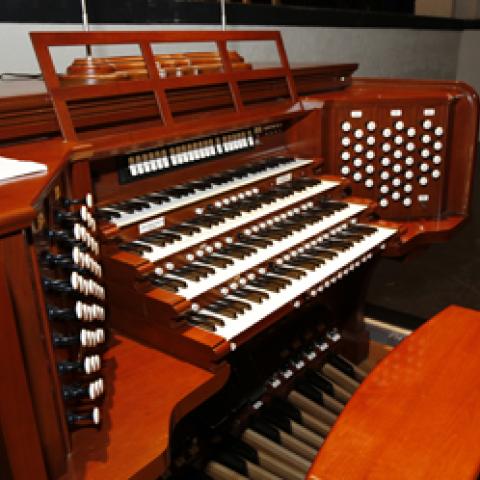
Winthrop University, Rock Hill, South Carolina, sponsored several events during the weekend of February 24–25 to celebrate Aeolian-Skinner Opus 1257 in Byrnes Auditorium, presenting the instrument to the community at large.
Saturday morning, February 24, was devoted to a program engaging an audience of young people. Maxine Thévenot played an opening fanfare and two works for organ and narrator. A Sweet for Mother Goose by George Akerley was narrated by Winthrop senior music theatre major Nicole Ernst. Local art teacher and Winthrop graduate Ashley Beard arranged for her high school art class to provide paintings interpreting the concepts of A Hiker’s Gear by Carson Cooman, while Beard and her husband donned the appropriate sporting garments for each movement of this work. Murray Somerville, former Harvard University organist and choirmaster, dressed up as G. Donald Harrison of Aeolian-Skinner, who died in 1956. The event was titled, “Meet Mr. Harrison,” as Harrison’s signature is displayed on the builder’s nameplate. At the conclusion of program, the young people had the chance to try the organ for themselves, as well as meet Thévenot and Harrison.
On February 25, Thévenot presented a recital on the organ, with works by Canadian composers Barrie Cabena, Denis Bédard, and Jeanne Landry, as well as music by Philip Moore, Frank Bridge, Bach, Vierne, Naji Hakim, and Franck. The musical events were presented as this year’s International Organ Recital Series. The series is supported by the Friends of the D. B. Johnson Organ, with major funding from the Hazel and Murray Somerville Organ Performance Endowment.
For information: www.winthrop.edu.
Photo credit: Mike Baker, Winthrop University



